A major burn injury occurs when something of high heat comes in contact with the skin. This type of injury can have serious repercussions because the skin is the largest organ of the human body that protects structures within the body from the environment. Once the skin is damaged or destroyed, a burn can have grave consequences on other organs as well.
A burn injury can be the result of several culprits including:
- Electricity
- Hot Objects
- Chemicals
- Fire
- Radiation
- Hot Liquid
Treatment
If you, or a loved one, have experienced a major burn injury, it is critical to seek medical attention. Doctors will know how to treat the burn wound appropriately in order to maximize recovery. Treatment options vary in accordance to the severity of the burn. Below are various techniques physicians may use to help throughout the healing process.
Dressings: Gauze or bandage material are placed on the burned area to help prevent infections.
Early excision: This is a surgical procedure which removes dead tissue to help prepare the affected area for a skin graft.
Debridement: Mechanical, chemical or surgical debridement removes unnecessary tissue that does not come of easily during the acute stage.
Skin grafts: This process transfers healthy skin to the wounded area from another area of the victim’s body, an animal or a cadaver.
Diagnosis
Burn injuries are classified into four categories in accordance to their severity. If you, or a loved one, have sustained a burn injury, it is important to identify the different types of burns in order to obtain appropriate medical treatment. The list below provides a list of burn injury types:
First degree: This is the least serious type of burn. It only affects the epidermis, the most outer layer of the skin, causing slight swelling, redness and peeling. Typically, this type of burn can be treated at home with cool water, ointment and a bandage.
Second degree: This burn is more serious than a first degree, as it affects the epidermis and the dermis, the second layer of the skin. It can cause severe pain, blistering, swelling and can damage body functions. While small second degree burns can be treated at home, a burn larger than the size of a baseball should receive professional medical attention.
Third degree: A third degree burn is considered a major burn because it destroys the epidermis and dermis and can cause damage to the nervous system as well. It will cause the skin to become white, charred, stiff or waxy and requires immediate medical attention, no matter what the size.
Fourth degree: This is the most severe type of burn and is considered a major burn as well. When a fourth degree burn occurs, all layers of the skin are destroyed and nerves, tissue and muscles are damaged. Similar to a third degree burn, this type of injury requires immediate medical attention, no matter what the size.
Size and location also determine the severity of the burn. A burn will require immediate medical attention if it effects more that 20 percent of the total body surface. You must also seek treatment if the face, hands, feet, major joints or groin/buttocks are burned.
Secondary Conditions
Major burn survivors are susceptible to secondary conditions during the acute and sub-acute phases of recovery. Although some side effects can be life threatening, a medical emergency team will check for these conditions immediately to prevent complications.
Immediate Secondary Conditions
Respiratory complication: A burn can cause blockage to the chest area. Doctors will check for this while in the emergency room. An endotracheal tube may be necessary to assist with breathing. In severe cases, doctors may have to perform surgery to provide further assistance
Hypovolemia: A serious burn can cause an extreme loss of blood and plasma. The fluid must be resuscitated immediately in order to prevent the body form going into shock.
Hypothermia: Our skin acts as a blanket for the human body. When skin is destroyed in a burn, body temperatures can drop drastically, leading to hypothermia. It is important to avoid treating the burn with cool water to prevent hypothermia.
Tetanus: Burn survivors are susceptible to tetanus because the bacterium that causes this condition is resistant to hot temperatures. Tetanus shots are administered to burn patients who haven’t received one within five years of the accident.
Infection: Open burn wounds invite bacteria that can cause infection. Wound dressings protect the injured area from the environment and help prevent infections from occurring.
Long Term Secondary Conditions
Keloid: A keloid is raised, overgrown scar tissue that extends beyond the area of injury and is typically flesh colored or pink. A keloid can potentially cause immobility to the affected area. However, this condition can be prevented through physical therapy.
Hypertrophic scar: Although this type of scar is similar to a keloid, it does not go spread past the wounded area and decreases in size over time.
Contracture: A contracture is the result of excessive scarring from the burn injury. This condition causes muscles, tendons, joints and skin to become rigid and immobile. Physical therapy is an effective form of treatment.
Sepsis: This is an infection in the bloodstream that can cause the body to go into shock. It requires immediate medical attention because it can be life threatening.
Loss of sensation: A serious burn can cause an individual to loose sensation in the wounded area. This can be dangerous because it prevents the survivor from determining how sharp, dull, cold or hot an object is.
Dry skin: The sebaceous glands, which are the skin’s natural moisturizer, can be destroyed after a burn. Therefore, most burn survivors must apply lotion frequently.
Rehabilitation
The rehabilitation process is important to help survivors reach their full recovery potential. In order to achieve the best results, the process begins during the acute phase in preparation for life with a burn injury.
Physical therapy: This form of therapy focuses on strength, endurance, coordination and mobility through exercises programs. For burn survivors, physical therapy helps prevent and ease contractures by improving range of motion.
Scar management: This is a very important component of rehabilitation because excessive scarring is common for burn survivors and can lead to contractures. To prevent or reduce scarring, burn survivors typically have to wear elastic garments to apply pressure to the wounded area.
Immobilization: Immobilization is a typical form of treatment for burn survivors who undergo reconstructive surgery because it helps the new skin heal and grow properly. Patients don’t typically remain immobilized for a long period of time because regaining motion is critical during rehabilitation.
Life With a Major Burn
Living with a major burn injury will undoubtedly require lifestyle adjustments. To avoid further complications, burn survivors are expected to be particularly precautious of activities that may affect the skin.
Weight can have a serious impact a one’s prognosis. Therefore, proper nutrition and a regular exercise regimen are more important than ever. Being underweight may lead to lack of cushion for the skin and increases the risk of pressure ulcers. Furthermore, the absence of proper nutrition can prevent the wounded area from properly healing. On the other end of the spectrum, being overweight has it’s impediments as well. If a burn survivor is in a wheelchair, it can make transfers difficult and can also lead to pressure ulcers.
Many burn survivors will have to wear garments on the injured area for a period of time after the injury. While most will only need to wear the garment for up to a year after the date of injury, there is no set length of time for this method of treatment. To help prevent and control excessive scarring, those who have sustained more severe burns may have to wear a garment for longer than others.
It is also important for major burn victims to avoid spending too much time in the sun, especially within the first two years after the injury. New skin is highly sensitive to sunlight, so the wounded area tends to burn easily and is susceptible to permanent skin discoloration. Burn survivors must apply sunscreen on a regular basis to prevent further damage to the wounded area.
While this period of change may be difficult in the beginning, it is important to remain optimistic and know that, with the proper care and treatment, you, or your loved one, can continue to enjoy activities you participated in prior to the injury.
Take a look at our comprehensive major burn injury resource guide to help you and your loved ones prepare for what lies ahead.














